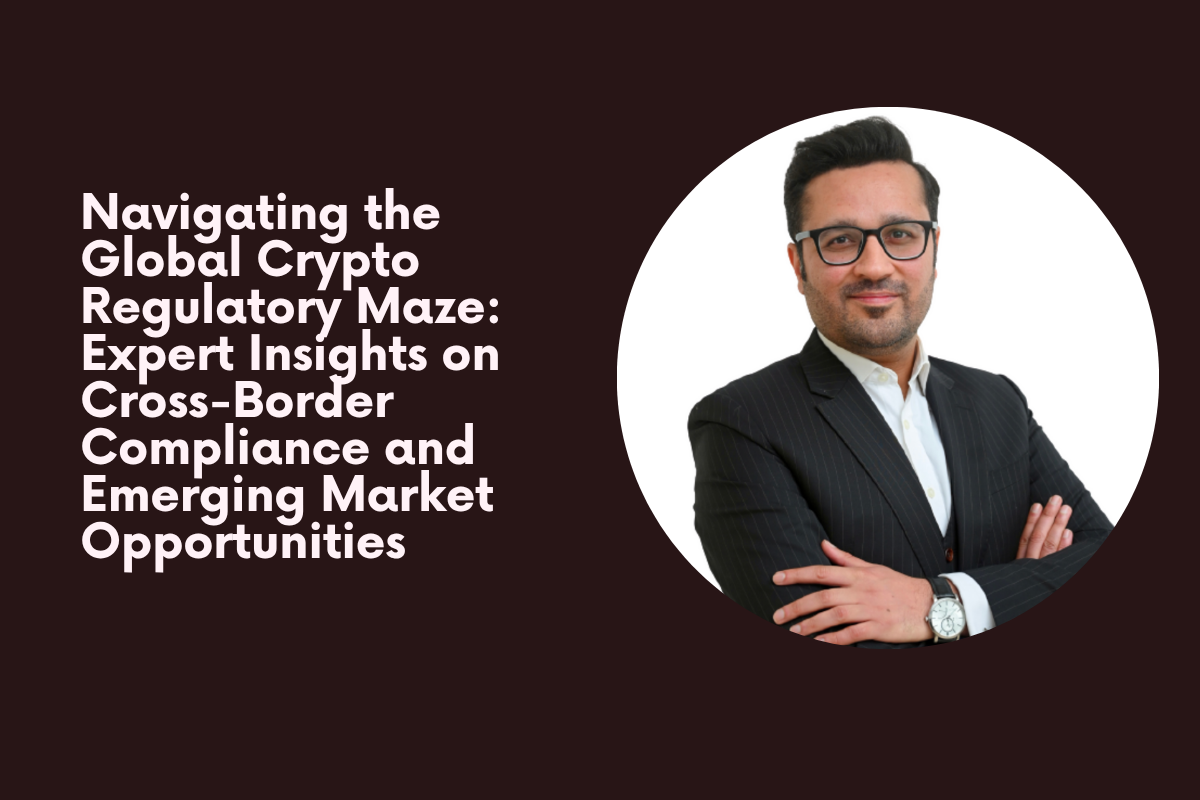Leading crypto regulatory expert Safi Ghauri shares critical insights on the complex challenges of operating across diverse global jurisdictions, from the EU's MiCA framework to MENA's fragmented landscape. Drawing from extensive experience in facilitating major crypto investments and securing groundbreaking fintech licenses, Ghauri reveals the "gold standard denominator" compliance strategy, explores untapped opportunities in emerging markets like Pakistan, and debunks dangerous misconceptions that lead to regulatory failures. Essential reading for crypto businesses seeking to build scalable compliance frameworks and turn regulatory excellence into competitive advantage in an increasingly complex global environment
Q: "Given your experience with crypto licensing and regulatory frameworks across MENA, Asia, LATAM and EU jurisdictions, what are the most significant regulatory harmonization challenges you've observed? How do you advise clients navigating conflicting compliance requirements when operating across these diverse regulatory landscapes?"
The most significant harmonization challenge is the fundamental divergence in how jurisdictions define and classify crypto assets, creating conflicting compliance pathways for identical products. While the EU's MiCA provides a harmonized framework with passportable licenses, MENA presents a fragmented landscape from Dubai's progressive VARA system to outright prohibitions in Egypt and Algeria. Similarly, Singapore's activity-based approach under MAS differs markedly from Brazil's functional tests, meaning a single token can be classified as a utility token in one jurisdiction, a security in another, and a payment instrument in a third. What is a currency in one jurisdiction becomes a commodity in another.
When advising clients navigating these conflicting requirements, I often recommend going with the "gold standard denominator" compliance strategy which is essentially building frameworks and policies that satisfy the strictest applicable standards across all target jurisdictions from day one. This includes implementing robust AML/CFT programs that exceed FATF recommendations, adopting MiCA level consumer protection, California’s data protection measures globally, and engaging proactively with regulators in each market rather than waiting for clarity. The key is designing compliance architecture that treats regulatory arbitrage as a risk rather than an opportunity, ensuring the business can scale seamlessly across borders without retrofitting compliance systems. Ofcourse these measures increase costs, so the challenge is usually to ensure that clients understand the costs and benefits of their risk appetites.
Q: "As someone who has facilitated major investments and secured Pakistan's first 'Buy Now Pay Later' license and various other introductory fintech projects, what unique opportunities and regulatory hurdles do you see for crypto adoption in emerging markets like Pakistan? How do traditional financial regulatory frameworks need to evolve to accommodate digital assets?"
Pakistan and similar emerging markets present an extraordinary opportunities for crypto adoption driven by compelling use cases which include but are not limited to financial inclusion for the unbanked population, cost-effective remittance solutions for diaspora communities and inflation hedging in volatile currency environments.
Our role in launching various new fintech models and projects in Pakistan and MENA taught us that innovation can flourish through proactive stakeholder education, robust self-governance and active discourse with regulators. I have also found, that many regulators in emerging markets now have a greater propensity to accept innovation than some regulators in developed countries. In my views the youth-driven and tech-savvy demographic creates an ideal ground for digital asset adoption, particularly in DeFi applications driven by the emerging economic and political crisis’s. However, these opportunities are counterbalanced by significant hurdles, primarily regulatory uncertainty and the critical need for FATF-compliant AML/CFT frameworks given the reliance of emerging economies on international monetary institutions.
In addition to this traditional financial frameworks must evolve from outright prohibitions to risk-based regulation, establishing clear asset classifications, dedicated VASP licensing regimes, and integration pathways with national payment systems. The regulatory evolution requires creating sandbox environments or pilot programs for controlled testing, implementing stringent consumer protection measures, and prioritizing financial literacy campaigns to ensure citizens understand both opportunities and risks—essentially replicating the collaborative approach that enabled the fintech breakthroughs we had experienced in the past. It is also pertinent to mention that due to our experience in fintech many legal and risk based controls have been built into regulations that can now be carried forward into web 3.0.
Question 3: "From your hands-on experience with crypto licensing and regulatory compliance, what are the most common misconceptions businesses have when entering the crypto space? What practical steps should companies take early in their crypto journey to build robust compliance frameworks that can scale across multiple jurisdictions?"
The most dangerous misconception is that compliance is a matter to be addressed post-launch. This unfortunate reactive approach inevitably leads to regulatory penalties and operational failures and I have witnessed the downfall of many amazing projects simply because compliance was an afterthought for them. I consistently encounter businesses believing that decentralization shields them from regulation or that generic compliance policies can satisfy diverse global requirements, both of which are fundamentally flawed assumptions. Many businesses underestimate the global reach of that regulations now have and fail to recognize that non-compliance can severely limit investment and partnership opportunities with compliant institutions and restrict access to more lucrative markets.
Companies must establish foundational governance from inception by engaging and equipping qualified lawyers with genuine authority and creating board-level risk committees that embed compliance culture organization-wide. In todays world tariffs, trade, war, AI, cyber attacks and environment are a key discussion points for every company and it has particularly significant impact on crypto projects. Lawyers no longer look at just laws but also serve as ‘chief horizon scanners’ to continuously update founders and institutions with emerging risks and opportunities. This paradigm shift requires comprehensive jurisdictional risk assessments that map specific legal regimes accompanied with implementing dynamic, technology-driven research to anticipate risks and find opportunities being create by the shifts in regulations. Ultimately the success of any company will depend on building compliance architecture that scales across multiple jurisdictions by design and treating regulatory excellence as a competitive advantage rather than a cost component.





.png)